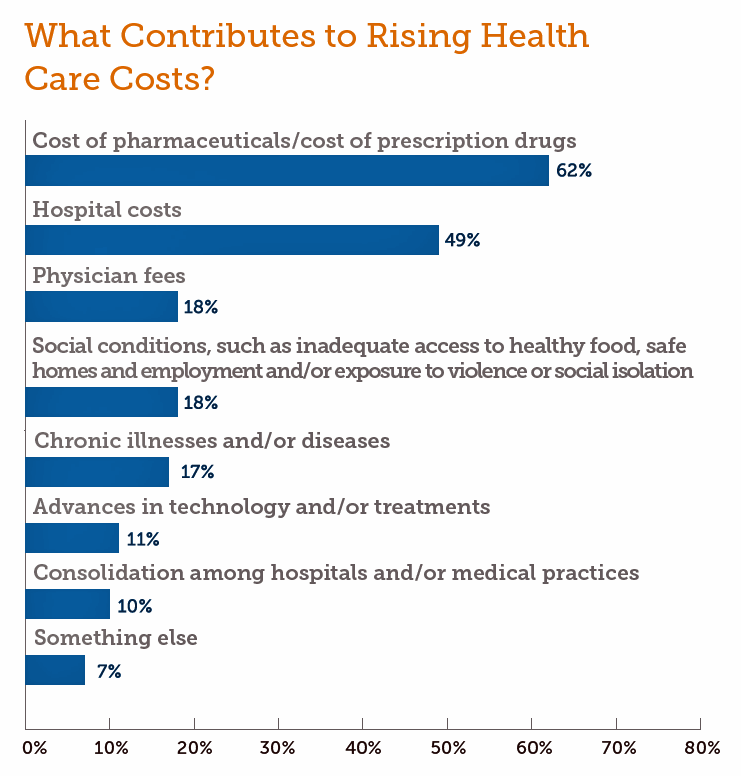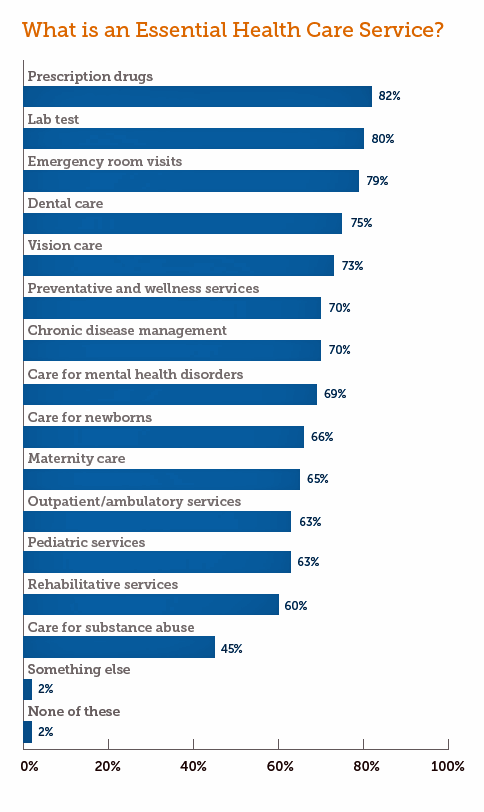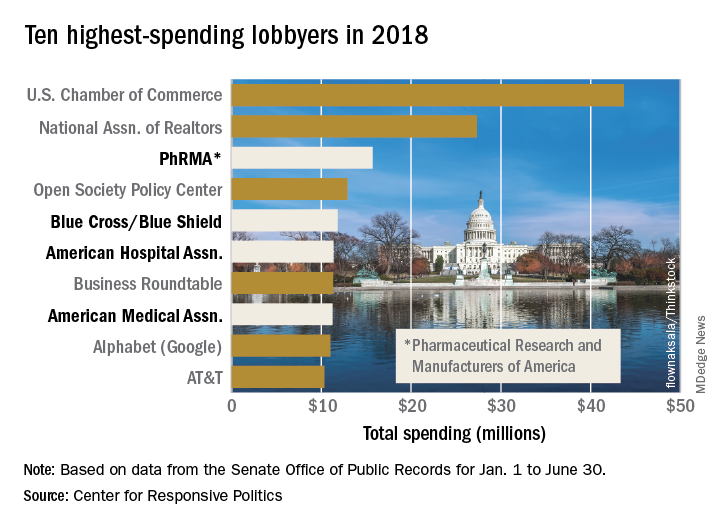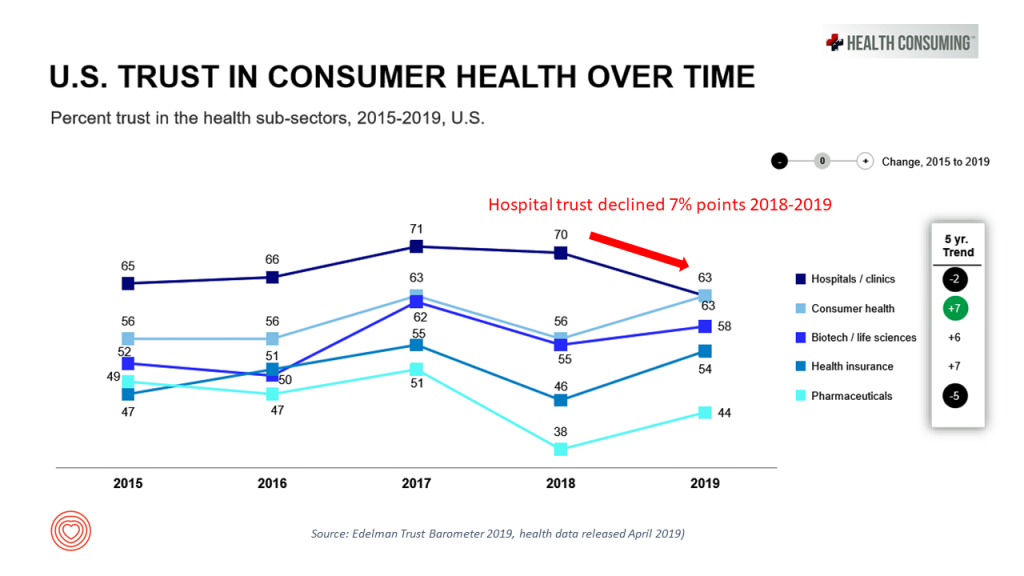
People in the U.S. rank prescription drugs, lab tests, emergency room visits, dental and vision care, preventive services, chronic disease management and mental health care as the “most essential” health care services, according to the 2019 Survey of America’s Patients conducted by The Physicians Foundation.
When asked what factors contribute to rising health care costs in America, most consumers cite the cost of prescription drugs.
Taken together, these two data points demonstrate the potent political import of prescription drug prices as the U.S. approaches the 2020 Presidential election.
The Physicians Foundation surveyed 2,001 U.S. adults between 27 and 75 years of age in September 2019 who had seen a physician at least once in the past year. I covered this study in yesterday’s Health Populi, focusing on consumers’ health care cost concerns and growing awareness of the impact of social determinants of health for patients’ own medical care and that of their communities’.
We learned in yesterday’s post that the vast majority of Americans cite costs as the top factor jeopardizing patient care in the U.S. 84% of Americans told the Foundation that they were concerned about how much health care costs will affect them in the future, with 42% of patients saying they couldn’t afford to pay over $500 for an unexpected medical bill.
 Top of mind for Americans in 2019 is the price of prescription drugs, according to 62% of people. Hospital costs contribute to rising medical costs to 49% of health consumers. Physician fees are cited as cost-contributing by only 18% of patients.
Top of mind for Americans in 2019 is the price of prescription drugs, according to 62% of people. Hospital costs contribute to rising medical costs to 49% of health consumers. Physician fees are cited as cost-contributing by only 18% of patients.
Exacerbating U.S. patients’ negative views of the pharmaceutical industry in this study was the opioid epidemic. Over one-half of Americans blame pharmaceutical companies as most responsible for the opioid crisis, followed by physicians, whom 39% of health consumers blame, and patients, whom 38% of people blame.
Health Populi’s Hot Points: There’s an ongoing dialogue (if we are to be the most sanguine optimist), debate (if we sit in the middle of the ping-pong table), or wrestling match (if we go full body slam) when it comes to what factors continue to drive up health care costs in the U.S.
For perspective, let’s examine the dollars spent for lobbying by each of the largest health care stakeholder associations, numbers brought to us by the Center for Responsive Politics.

The bar chart shows that PhRMA (the advocacy group for the pharmaceutical industry), Blue Cross & Blue Shield Association, the American Hospital Association, and the American Medical Association (representing physicians) were four of the ten highest spending lobbyers in 2018.
There’s an ongoing “debate” (to stay middle of the road in describing the many sides of the question) regarding “who” is to blame for rising medical spending in America.
A recent study on politics and health care spending in the U.S. published by the National Bureau of Economic Research found a close link between electoral politics and Medicare: that is, between legislative processes in the U.S. Congress and healthcare spending.
 NPR covered this and other research in a piece on how non-profit hospitals could be driving up health care spending. In the words of NPR, “Hospitals are the largest individual contributor to health care costs in the U.S….over a trillion dollars a year,” which is about one-third of national health spending.
NPR covered this and other research in a piece on how non-profit hospitals could be driving up health care spending. In the words of NPR, “Hospitals are the largest individual contributor to health care costs in the U.S….over a trillion dollars a year,” which is about one-third of national health spending.
“The cost of hospital services has been exploding. Between 2007 and 2014, hospital prices grew 42%. The irony is most hospitals are ‘nonprofit,’ a status that makes them tax exempt….yet it’s clear nonprofit hospitals are very profitable,” the NPR story continued.
It’s important to note that this year’s Edelman Trust Barometer found that Americans’ trust in the hospital sector eroded from 2018 to 2019, while over that year trust in the pharma industry increased.
Will consumers cross that cost-and-trust chasm and express similar outrage with the hospital sector as they’ve shown for a decade vis-a-vis Big Pharma?
If surprise medical bills, out-of-network hassles, and waiting times for services persist, we may see this happen as patients-as-payors exercise their consumer muscles. And that also includes how people will vote at the polls in 2020.
The post Will Consumers Cross the Cost-and-Trust Chasm Between Prescription Drugs and Hospitals? appeared first on HealthPopuli.com.
Will Consumers Cross the Cost-and-Trust Chasm Between Prescription Drugs and Hospitals? posted first on http://drugsscreeningpage.blogspot.com/
No comments:
Post a Comment